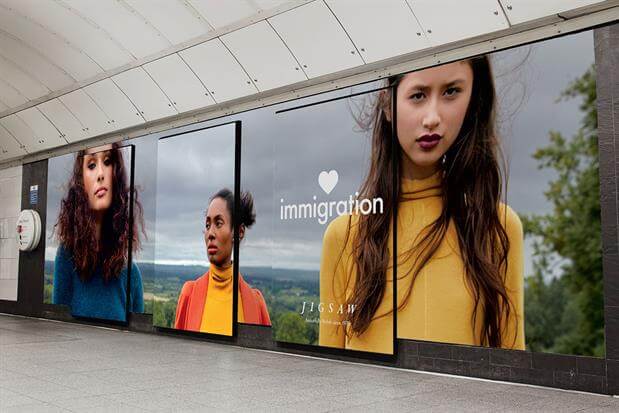The art of reappraisal
Some of the most insidious branding problems start out as virtues. Familiarity is one of them. Without it, where would a brand be? Ready mental availability is a requisite of brand life, to the extent that ‘unfamiliar brand’ is virtually an oxymoron: being known is what brands are for, their codes, cues and colours ideally evoking an instant mental snapshot of both product and place in the market.
But extend that casual familiarity through the decades, for a brand, let’s imagine, that has stayed true to its positioning, refreshing every now and then, innovating on cue – and what do you get? The textbooks will tell you that this is branding nirvana. Many marketers with long-established brands will tell you, though, that things are not always that simple.
To their dismay, familiarity can translate into a kind of low-energy cosiness. The brand is taken for granted, passed over, sidelined in the consumer’s mental space. Research may show that positioning is as relevant as ever, that product and service standards have held up, that innovations are welcomed – but the brand can’t seem to extricate itself from a cul-de-sac of indifference: a good, reliable standby when consumers need it, but nothing to set the pulse racing.
It’s a bit like that colleague of yours down the corridor, the one who’s been there for ages and always seems to be passed over for promotion. Here is someone whose core strength is well understood – a fluency with consumer data, perhaps – and whose reliability is unquestioned; yet that very familiarity and expectedness leads to being ignored when the shiny corporate prizes are being handed out.
Suppose they wanted to change that – to seek reappraisal for the role they play and the skill they bring. It’s not an easy ask. Just dressing a bit more sharply, or starting an industry blog – the equivalent of a refresh – won’t provide the sufficient jolt. On the other hand, a sudden foray into an unexpected space – the equivalent of repositioning – will raise eyebrows but in the wrong way, fostering an uncomfortable cognitive dissonance.
But if they could devise a spectacular coup within the competence they’re known for – setting up a webinar, let’s say, and securing both Rory Sutherland and Nassim Taleb on the panel – that would change perceptions at a stroke. Easier said than done, of course.
 This, then, is the art of reappraisal – not to bend the brand out of shape and change what it is, solely to make people sit up and notice, the way they might stare at an accident – but to force people to revaluate the significance of what the brand has always been deep down. The big thing to know is that this is a high hurdle to clear.
This, then, is the art of reappraisal – not to bend the brand out of shape and change what it is, solely to make people sit up and notice, the way they might stare at an accident – but to force people to revaluate the significance of what the brand has always been deep down. The big thing to know is that this is a high hurdle to clear.
The brand that cleared it most impressively in 2017 is Jigsaw, which went from predictable high-street fashion outlet to Campaign’s ‘meaningful brand’ of the year, with its impassioned paean to immigration.
In a country riven down the middle by Brexit, and freedom of movement the raw nerve in the friction between the two sides, this unequivocal declaration of support for migrants is a starkly courageous stand, even in the brand’s metropolitan heartlands.
It’s a jolt, for sure, yet it rings true – both to the brand’s relatively recent positioning of ‘Style and Truth’ and to its free-roaming roots. Its origins date back to a late-1960s hippy road trip, when founder John Robinson and a friend brought back Afghan coats from Istanbul and jewellery from Turkish bazaars in an old post-office van, selling their blood intermittently to pay for food.
Some of the copylines in the posters – ‘Without immigration, we’d be selling potato sacks’ – are a reminder that in a reappraisal assault, your agency is a vital force. Agencies have big creative engines and marketers have a tendency to gently apply the brakes, often with good reason.
But this a time to ease off and let that engine surge. Ensure the team’s understanding of the brand’s meaning is deep and thorough – even if they’ve been working with you for a while – and prepare to be shocked by what they produce. If you’re not, it probably won’t clear that hurdle.
Which brands could benefit from reappraisal in 2018? The fact that they don’t readily spring forward is part of the problem: these are brands that are stored in the attic of the mind, so known they are no longer noticed. But going up there and having a rummage, I would venture Holiday Inn, Neutrogena, Burger King, Alpen, Fairy and even Ford as candidates.
A reappraisal strategy is not for the fainthearted; done properly it is guaranteed to scare. On the upside, though, it can succeed in two ways: forcing those who are over-familiar with the brand to look at it again with astonished eyes, and putting it on the radars of those who had never really considered it in the first place. It’s nice when a branding problem gives way to not just one virtue, but two.
